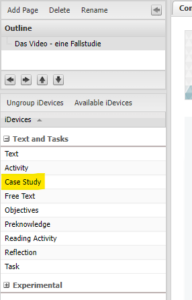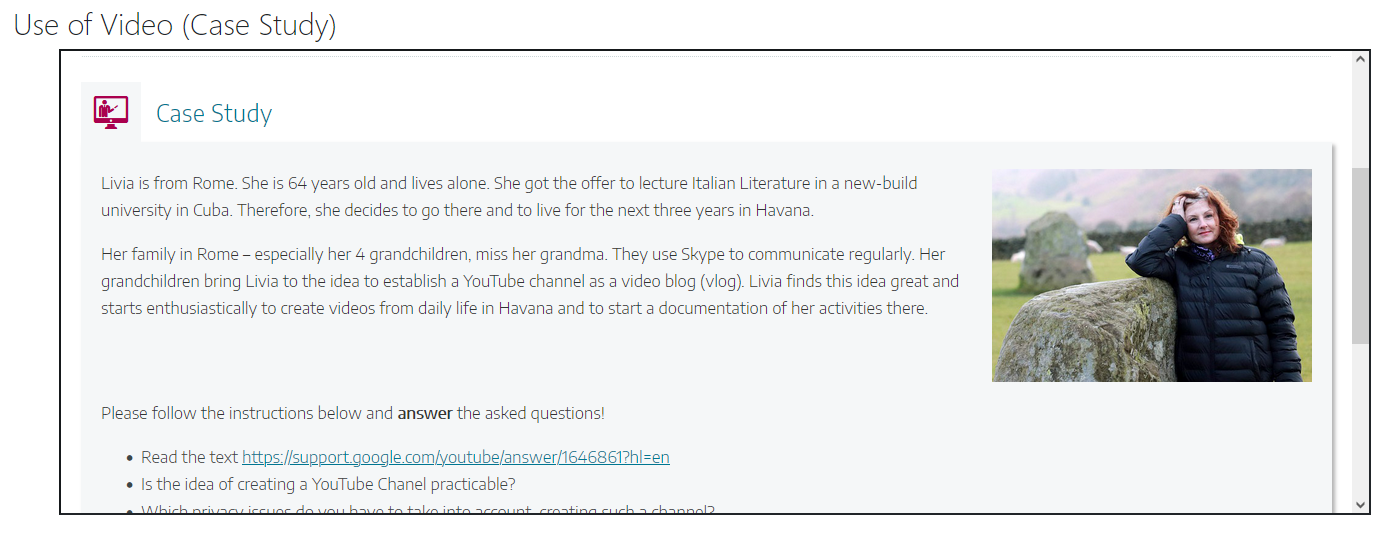 A case study can be defined as an intensive study about a person, a group of people, or a unit, which is aimed to generalize over several units. Normally, case studies are connected with specific sets of data (mostly numbers). In education, you may use a case study to ask the learners a specific question and want them to create solutions. This can be done by a learner individually (for example, in the Individual learning space of Flipped Learning 3.0 FL 3.0) or in pairs with a follow-up discussion (for example, in the group learning space of FL 3.0).
A case study can be defined as an intensive study about a person, a group of people, or a unit, which is aimed to generalize over several units. Normally, case studies are connected with specific sets of data (mostly numbers). In education, you may use a case study to ask the learners a specific question and want them to create solutions. This can be done by a learner individually (for example, in the Individual learning space of Flipped Learning 3.0 FL 3.0) or in pairs with a follow-up discussion (for example, in the group learning space of FL 3.0).
Which tool?
For typical learning platforms, no tool exists to create case studies. Consequently, you must use some external tools and insert the case study into your learning platform. In our tests, we identified eXe-Learning as a practicable and handy tool.
Example
Our example origins from a training course for older adults (“Digital Immigrants Survival Kit”, Erasmus+ DISK-Project), dealing with videos. To create a situation of everyday life, the dilemma of Livia was created (as a narrative) and presented, with additional solution comments.
Here, you can test the case study: Livia’s dilemma (Opens in a new window).
Recommendations
 eXe-Learning supports the development of simple case studies easily. The iDevice (this is the term eXe-Learning uses for the integrated ready-made modules) is native and can be used from the scratch.
eXe-Learning supports the development of simple case studies easily. The iDevice (this is the term eXe-Learning uses for the integrated ready-made modules) is native and can be used from the scratch.
The more interesting part of the case study development is the story that’s behind it – you have to find a matching narrative:
- It must engage the learner,
- be inspiring, but also
- contain a solution that is crucial for learning.
Solutions in case studies are usually ambiguous, so a subsequent discussion in the group (preferably conducted in the group learning room) is an additional enrichment.
Views: 515

